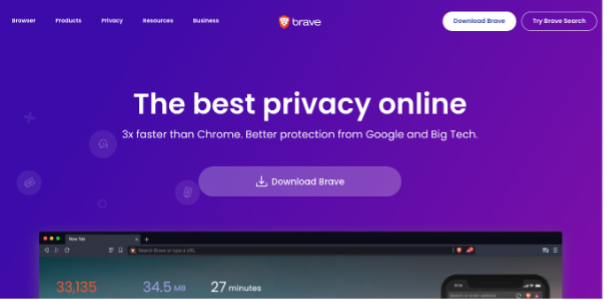As we all know advertising has evolved in the last few decades from conventional avenues to largely digital-first. With the advent of more refined digital strategies marketers have benefitted from the oversupply of customer data available at our fingertips, which in turn allows brands to refine and personalise their customer experiences. More recently though, users have demanded ownership of data. This is where web 3.0 (AKA web3) comes in.
What is Web 3.0?
Put simply, it’s a new iteration of the internet which incorporates concepts such as decentralisation and blockchain. Even simpler, it’s all about putting the power back in the hands of the people, rather than big tech corporations.
How is this possible?
People have demanded ownership of their data, rather than large corporations owning and selling data on their behalf. Consider Facebook Ads as an example. Currently marketers pay a ‘media’ fee to Meta in exchange for their data. We then have access to customer data such as age, gender, location, interests, which we use to target the right ads to the right people; those who are more likely to engage and respond. This is our current web 2.0 world.

The age of tokenisation
In the web 3.0 world, we no longer pay large tech giants for their data. We simply pay the end user for their attention via tokens. This is called ‘tokenisation’ or the token economy. In the new internet, every user will have a digital wallet and all the data the wallet account creates will be an asset in that wallet. The wallet account can transfer assets to a different account without an intermediary via Blockchain.
Web browsing in Web 3.0
According to Stat Counter, over 65% of internet users worldwide use Google Chrome as their main browser. It is no wonder why Google Ads are so popular and effective. But this is the Web 2.0 world.
Moving into the Web 3.0 world, we are seeing new browsers emerge such as Brave, which allows users to browse and search privately, blocking trackers and ads on all sites.
With privacy being an increasing concern for users, you can imagine why Brave has amassed 50 million monthly active users – and counting. A 2021 survey by Brave reveals the following stats:
- 65% of users are aged between 25-49
- 45% of users are employed full-time, 22% are students, 18% self-employed, 5% small business owners
- Only 51% of Brave users also use Facebook, only 1 in 5 also use Snapchat, TikTok or Pinterest
- 6 in 10 use an ad blocker when using other browsers, and hence will not see Google Ads (for example)
- 3 in 4 users already own some form of cryptocurrency
- 51% of users feel more positive about brands that advertise on Brave

Web3 advertising: the Brave Browser example
According to Brave, it offers advertisers “the opportunity to participate in a premium, brand-safe, opt-in ad ecosystem, all designed for a future without 3rd party cookies”.
Types of media supported by Brave Ads
- Text (headlines, CTAs)
- High resolution imagery
Types of Ads Available
- Push Notifications include a title, CTA and Clickthrough URL
- Sponsored Images: high impact, full-screen striking images featured in the new tab pages
- Promoted Content Unit: brand and partner content, displayed as a promoted badge, image and brand name
If Brave is all about privacy, then how do we target our ads?
According to Brave, “Brave uses anonymous-but-accountable ad confirmation events to allow us to report campaign performance and delivery for advertisers without tracking users and without personal data leaving the user’s device… we use privacy-preserving analytics that allow us to calculate high-level statistics about ad usage without gaining insight into any information about particular individual users.”
Using machine learning, Brave matches ads directly from the end-user’s browser. Using the extensive content categories available, we can target ads based on user’s interests. Country-level ad matching, and operating system matching is also available.
How does token economics apply?
The ‘media’ fee payable goes towards paying users for their attention. In the initial Brave Ads release, users receive a cryptocurrency called Basic Attention Token (BAT) for viewing the ad notifications. Brave does not reward users for simply clicking on the ads, as the belief remains that users should only click on ads they are genuinely interested in. It is possible that in future releases, users may be able to earn additional rewards for certain engagement events. BAT rewards individuals without compromising their privacy.
What can users do with BAT?
A few things! BAT continues to fluctuate in price, so the first option is to hold BAT over the long term and benefit from a rise in price (like holding onto Stocks). The second option is to sell it into fiat currency / cash. The third option is to hold, accumulate and patiently wait for when BAT is more widely accepted as currency for everyday purchases. Soon, users will be able to use BAT in partnership with Tap, for rewards including gift cards (such as Amazon, Uber and Apple), hotel discounts – just to name a few. Finally, users can use BAT to support their favourite content creators online – another benefit of the web 3.0 world.
How effective are Brave Ads?
Data from Brave shows that their ads achieve:
- 64% average lift in brand awareness
- 17% lift in purchase intent
- 50% ad recollection
- 75% click-through rate
There are a range of metrics are available via Brave Ads including views, clicks, ad dismissals, 10-second visits, upvote/downvote, conversions and brand lift.
Final thoughts
Facebook Ads, Google Ads, LinkedIn Ads are still the most sophisticated platforms we have available right now. However, as data restrictions continue to amplify – it is hard to ignore the benefits of web 3.0 advertising. And the Brave browser is just the start.
Want to learn how to take advantage of Brave Ads for your brand? Get in touch with us now.
Simply want to learn more about blockchain and web 3.0? Chat to us




